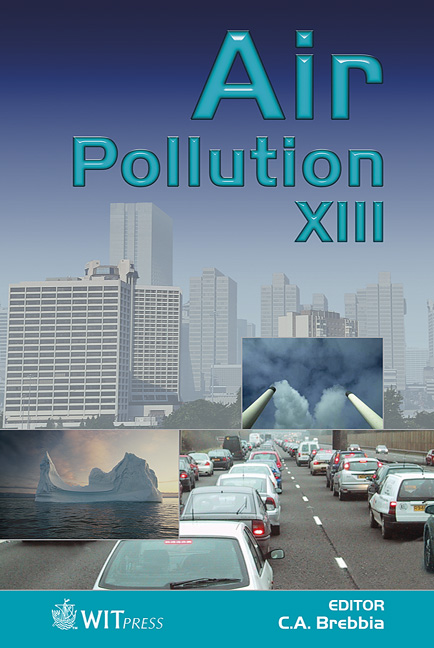A Study Of The Air Pollution Levels Produced In The Neighbourhood Of An Urban Terminal Bus Station
Price
Free (open access)
Transaction
Volume
82
Pages
7
Published
2005
Size
478 kb
Paper DOI
10.2495/AIR050331
Copyright
WIT Press
Author(s)
L. M. Caligiuri, A. Reda & A. Sabato
Abstract
This paper presents the analysis of the air pollution levels measured in the neighbourhood of an urban terminal bus station, placed in the centre of a middle-size town. These types of stations are characterized by high flows of incoming and outgoing buses which sum to those of the other types of vehicles, so determining in their neighbourhood potentially high air pollution levels. The aim of this work is to propose a measurement and analysis technique able to distinguish the contribution to the overall air pollution level of the bus emissions from that produced by the other urban sources (other than bus traffic, plants, etc.). In order to perform this characterization the time behaviour of the relevant pollutant concentration levels has been analyzed in connection with the vehicular flow intensities and the main meteo climatic parameters. 1 Introduction The urban - terminal bus stations generally represent particularly interesting air pollution sources, because of their ability to potentially determine, in their neighbourhood, high pollution levels. In fact, the emissions by buses incoming and outgoing from them sum to those produced by all the other vehicular sources. For the assessment of air quality it’s so very important to characterize the emission due to the specific sources, that is the buses, distinguish, as much as possible, their contribution from that of vehicular traffic, composed of cars, motorbikes and other vehicles other than buses. This information can be used not only to quantify the air quality level, in the station neighbourhood, but also to verify efficiency of the antipollution bus systems. The meteo-climatic conditions
Keywords





